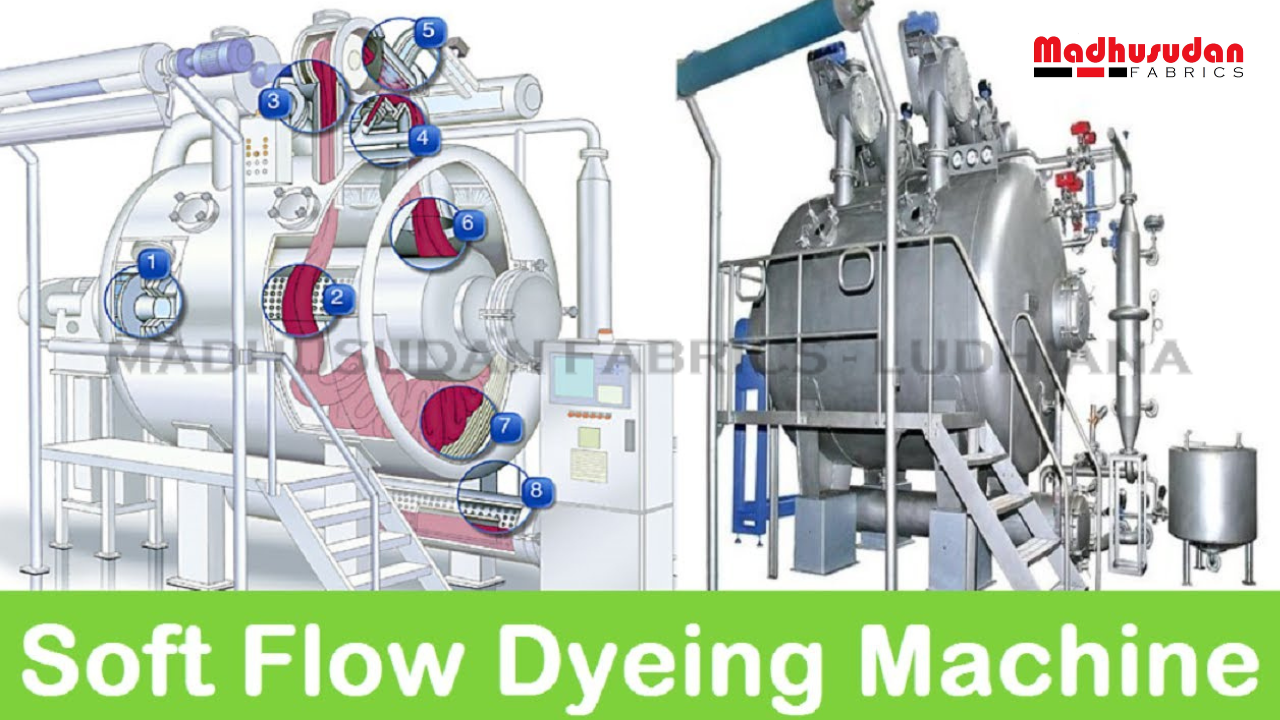Dyeing is a crucial process in the textile industry, where fabrics and yarns are colored to achieve vibrant hues and unique patterns. Over the years, various dyeing methods have been developed to cater to the diverse requirements of the industry. One such innovative and widely used technology is the “Soft Flow Dyeing Machine.” In this article, we will delve into the details of the soft flow dyeing machine and its dyeing process, exploring how it has revolutionized textile dyeing and its impact on efficiency and quality.
What is a Soft Flow Dyeing Machine?
The soft flow dyeing machine is a modern and highly versatile apparatus used for dyeing both woven and knitted fabrics, as well as yarns. It represents a significant advancement over traditional dyeing methods, such as jig dyeing or winch dyeing, which are known for their limitations in dye penetration and color consistency. Soft flow dyeing machines have gained popularity due to their ability to provide superior dyeing results and higher productivity.
The Working Principle of Soft Flow Dyeing Machine:
The soft flow dyeing machine operates based on a continuous dyeing process. The fabric or yarn to be dyed is placed inside a closed chamber, and the dye liquor is continuously circulated through it. This circulation is achieved using a combination of high-pressure water and air flow. The movement of the dye liquor is gentle, ensuring minimal stress on the textile material, hence the name “soft flow.”
Key Components of Soft Flow Dyeing Machine:
- Dyeing Chamber: It is the main vessel where the fabric or yarn is loaded for dyeing. The chamber is designed to accommodate the desired dyeing capacity.
- Dye Circulation System: This system is responsible for circulating the dye liquor throughout the dyeing chamber. It typically comprises pumps, pipelines, and a heat exchanger to maintain the required temperature.
- High-Pressure Nozzles: These specialized nozzles are strategically positioned inside the dyeing chamber. They facilitate the uniform distribution of the dye liquor onto the fabric or yarn surface.
- Air Pads: Air pads are installed at the bottom of the dyeing chamber to create a cushion of air. This cushioning effect ensures that the fabric or yarn moves smoothly through the dye liquor without getting entangled.
- Control Panel: The soft flow dyeing machine is equipped with a sophisticated control panel that allows the operator to set and monitor various parameters such as temperature, pressure, and processing time.
The Soft Flow Dyeing Process:
The soft flow dyeing process involves the following key steps:
- Preparation: The fabric or yarn is pre-treated to remove impurities, sizing agents, and natural waxes. It is essential to ensure the material is free from any contaminants that might hinder the dye absorption.
- Loading: The prepared fabric or yarn is loaded into the dyeing chamber. The machine’s capacity may vary, allowing for efficient processing of small to large batches.
- Dyeing Liquor Preparation: The dyeing liquor is prepared by mixing the desired dye with water. Additionally, chemicals like leveling agents, pH modifiers, and fixatives are added to enhance dye absorption and color fastness.
- Dye Circulation: The dye liquor is pumped into the dyeing chamber, and the high-pressure nozzles disperse it uniformly onto the fabric or yarn. Simultaneously, air pads create a gentle air flow to ensure smooth movement of the material.
- Heating and Processing: The dyeing chamber is heated to the required temperature for the dyeing process. The fabric or yarn is continuously processed through the dye liquor for the specified duration to achieve the desired color intensity.
- Rinsing and Finishing: After dyeing, the excess dye is removed by rinsing the fabric or yarn with water. Depending on the requirement, additional finishing processes like softening or drying may be applied.
Advantages of Soft Flow Dyeing:
- Improved Dye Penetration: The soft flow dyeing process ensures better dye penetration throughout the fabric or yarn, resulting in consistent and vibrant colors.
- Reduced Water and Chemical Consumption: Compared to traditional dyeing methods, the soft flow process requires less water and chemicals, making it an eco-friendly choice.
- Enhanced Color Fastness: The controlled and uniform dyeing achieved through the soft flow process leads to improved color fastness and reduced color bleeding.
- Higher Productivity: Soft flow dyeing machines offer faster processing times, enabling higher production rates and quicker turnaround times.
- Gentle Treatment of Textiles: The gentle circulation of the dye liquor and the cushion of air provided by the air pads ensure that the textiles undergo minimal stress and retain their original texture and appearance.
In conclusion, the soft flow dyeing machine has emerged as a game-changer in the textile dyeing industry, revolutionizing the way fabrics and yarns are colored. Its ability to achieve superior dye penetration, enhanced color fastness, and reduced environmental impact makes it a preferred choice for textile manufacturers worldwide. As technology continues to advance, we can expect further refinements and innovations in soft flow dyeing, leading to even more efficient and sustainable dyeing processes.

